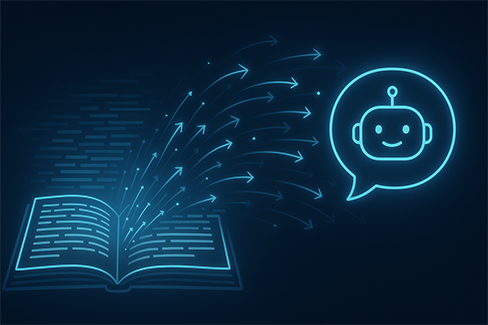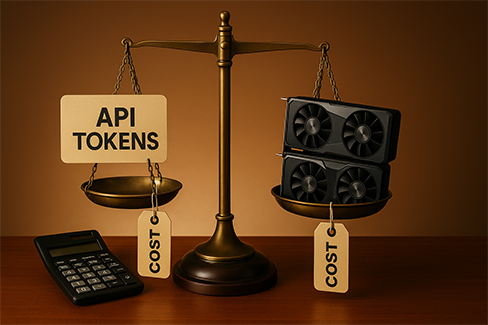Customization spectrum: prompts → RAG → fine-tuning → training
AI customization exists on a spectrum of complexity and control:
- Prompt engineering → Zero-cost, instant customization with clever instructions.
- RAG (Retrieval-Augmented Generation) → Extend model knowledge with external data.
- Fine-tuning → Adjust the model weights with curated examples.
- Full training → Build from scratch—rarely feasible outside big labs.
Most SaaS and enterprise teams live in steps 1–3. Choosing between prompts and fine-tuning depends on scale, consistency, and cost tolerance.

Prompt engineering: real capabilities and limitations
Prompt engineering is about getting more from the same model with zero retraining.
Advanced techniques: few-shot, chain-of-thought, system prompts
- Few-shot learning: Show the model a handful of labeled examples in the prompt.
- Chain-of-thought: Ask the model to “think step by step” for better reasoning.
- System prompts: Persistent instructions like “Always answer in JSON.”
These tricks can dramatically improve performance in lightweight use cases.
When prompts aren’t sufficient
Prompts alone struggle when:
- You need strict consistency (e.g., compliance outputs).
- The domain is highly specialized (e.g., legal contracts, biotech).
- Users expect answers in specific voice/style across thousands of outputs.
At that point, fine-tuning or RAG is required.
Fine-tuning scenarios: data requirements and ROI
Fine-tuning adjusts the model itself with custom examples, locking in desired behaviors.
Supervised fine-tuning vs RLHF considerations
- Supervised fine-tuning (SFT): Feed in input → output pairs to train predictable responses.
- RLHF (Reinforcement Learning from Human Feedback): Adds preference ranking to shape tone, safety, or helpfulness.
Most teams stop at SFT; RLHF is complex and resource-heavy.
Data quality over quantity: 100 vs 10,000 examples
- 100 high-quality examples → enough for style, formatting, or tone alignment.
- 1,000–10,000 examples → needed for domain expertise or task-specific accuracy.
- Beyond 50,000 examples → diminishing returns unless building highly specialized models.
Detailed cost analysis: development + training + inference
- Prompt engineering: $0 (time cost only).
- RAG: $200–500/month infra for vector DB + embeddings.
- Fine-tuning (OpenAI, Anthropic):
- Training: $100–$5,000 depending on dataset size.
- Inference: Fine-tuned models often cost more per token than base models.
- Local fine-tuning (Llama 2/3): Cloud GPUs ($2–5/hour); full runs can cost $500–10k.
Hidden cost: iteration cycles. Fine-tuning may take weeks vs prompts that can be tested in minutes.
Use case decision matrix with examples
Customer support: prompts vs fine-tuning
- Prompt engineering: Great for small support KBs + general LLMs.
- Fine-tuning: Necessary for strict tone (“always escalate billing issues”), multilingual alignment, or reducing hallucinations.
Code generation: when each approach wins
- Prompts: Chain-of-thought + few-shot improves debugging and explanation.
- Fine-tuning: Needed for niche stacks (COBOL, proprietary APIs).
Content generation and brand voice
- Prompts: Adequate for occasional blog posts.
- Fine-tuning: Essential for agencies or SaaS producing thousands of pieces in a consistent tone.
Technical implementation: tools, platforms, monitoring
- Platforms: OpenAI fine-tuning API, Anthropic, Hugging Face Trainer, MosaicML, LoRA adapters for open models.
- Tools: LangChain & LlamaIndex for RAG, Weights & Biases for experiment tracking.
- Monitoring: Track accuracy, consistency, and cost per output.
Maintenance and iteration: long-term considerations
- Prompts: Easy to tweak anytime, but brittle—minor model updates may break them.
- Fine-tunes: More stable once deployed, but require retraining when base models update or compliance rules change.
- Ops burden: Fine-tuned models need monitoring for drift and retraining every 6–12 months.
Hybrid approaches: combining techniques effectively
Best practice in 2025 is layered customization:
- Prompt engineering → baseline behavior.
- RAG → inject fresh data at runtime.
- Fine-tuning → lock in formatting, tone, and domain-specific quirks.
Example: A SaaS helpdesk bot uses fine-tuned tone, RAG for up-to-date KBs, and prompts for reasoning strategies.
The sweetspot
- Prompt engineering wins when speed, cost, and flexibility matter.
- Fine-tuning wins when scale, consistency, and domain control matter.
- Hybrid approaches combine strengths and cover weaknesses.
Teams should model ROI, timeline, and maintenance overhead before committing to fine-tuning. In many cases, prompt engineering + RAG is enough until usage justifies the investment.
FAQs
Can I replace fine-tuning with better prompts?
Sometimes. For small-scale tasks, yes. But for consistent domain-specific output, fine-tuning is superior.
What’s the minimum dataset size for fine-tuning?
100–500 examples for style; 1,000+ for domain-specific reasoning.
Does fine-tuning make inference cheaper?
Usually no. Inference often costs more, though reduced hallucinations can offset costs.


